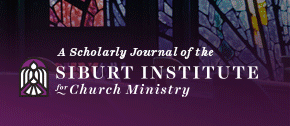Abstract
The methodology developed for recent research originated from the idea that God is constantly transforming and adapting a congregation’s narrative. With this in mind, it becomes imperative for church leaders to discern how God continues to alter the congregation’s narrative in order to effectively reach out to an immediate context. To assist church leaders to identify God’s transformative work, I developed a procedure designed to move from a congregation’s existing narrative to envisage a future narrative. This process blends Appreciative Inquiry, Ethnographic Inquiry, and Paul Ricoeur’s three moves toward mimesis, culminating in the discovery of God’s transformed future narrative.
Discovering a transformed narrative begins with inviting church leaders to participate in narrative conversations. These conversations are crafted from Appreciative Inquiry and Ethnographic Inquiry, and encourage church leaders to focus on the positive scenes in the congregation’s narrative. Data from these conversations is then separated into a three circle Venn diagram corresponding with Ricoeur’s three moves toward mimesis. The first circle records data from the congregation’s existing narrative. The second circle documents God’s presence in congregation’s narrative. The final circle represents the way God’s presence works through the congregation’s narrative to shape ministry for the immediate context. Through these moves, church leaders are positioned to discover the congregation’s transformed, future narrative.
Creative Commons License

This work is licensed under a Creative Commons Attribution 4.0 License.
Recommended Citation
Carr, Randall
(2017)
"Fostering Healing through Narrative Transformation,"
Discernment: Theology and the Practice of Ministry: Vol. 3:
Iss.
2, Article 3.
Available at:
https://digitalcommons.acu.edu/discernment/vol3/iss2/3

